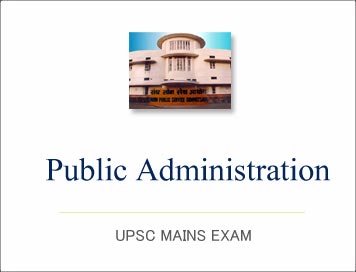Public Administration Mains 2017 : Solved Paper Question Paper-2 (Question-2)

Public Administration Mains 2017 : Solved Paper Question Paper-2 (Question-2)
(SECTION A)
Q2) a) “The market reforms have not infringed the basic structure of the Constitution of India, but have largely compromised the realization of the ideals of social and economic justice.” Comment (20 marks) (Philosophical and Constitutional framework of government)
ANSWER : Until the end of the 1970s, and to a large extent even in the
1980s, development was state-directed and state-driven. The preamble pointed out
that the priority given to the concept of justice as compared to liberty,
equality and fraternity and to social and economic as compared to political
justice. To achieve the ideals of social and economic justice the state is
required to involve in different social justice schemes like reservation for
SC/ST/OBCs, MGNREGA, Mid Day Meal Scheme, Sarva Sikha Abhiyan, etc. A
fundamental shift from this perception to one supporting a liberalised economy
occurred in the early 1990s.
Social development has many dimensions.Equally, growth does not automatically
result in increased social sector expenditures. There has to be a definite
policy focus. Social sector expenditure must be prioritised to reflect the needs
of the society. The administrative framework and delivering systems must be such
as to maximise benefits. Reforms, to be credible, must not only result in higher
growth but also benefit all sections of society. Government must therefore,
pursue a two-fold strategy: of accelerating growth through an appropriate reform
agenda and deploying the surpluses generated through growth to augment social
welfare. The market reforms of our country are focussing more and more on the
expansion of capitalism and privatisation, and continuously focus is diluted
from the issues of social justice except in certain conditions when state
intervenes is indispensable to control the market forces i.e. demand and supply.
b) “The idea of lateral entry into the Civil Services would energies Indian administration.” What are its possible advantages and limitations?(20) ( Civil Services)
ANSWER : With recommendations of the Seventh Pay Commission, the
debate on lateral entry into the civil services has restarted. The idea of
lateral induction is not new. Lateral induction is a small step towards
essential housekeeping in central government staffing.
Possible advantages: (1) It infuses fresh energy and thinking into an
insular, complacent and often archaic bureaucracy.
(2) It enables the entry of right-minded professionals and the adoption of best
practices for improving governance.
(3) It filled up the vacant post with available best talent.
Possible Limitations : (1) Lateral entry could further enfeeble the
bureaucracy.
(2) Risk of degenerating into an uncontrollable “spoils” system.
(3) It raises concerns about accountability.
(4) Adversely affecting the morale of incumbents and distort the incentives of
entrants.
(5) It would adversely affect career-progression opportunities.
